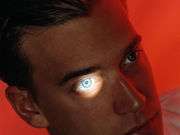IOP spikes common after cyclophotocoagulation

(HealthDay)—For patients undergoing cyclophotocoagulation, intraocular pressure (IOP) spikes are common in the immediate postoperative period, according to a study published in the December issue of Clinical & Experimental Ophthalmology.
Samreen Uppal, F.R.C.Ophth., from the Nottingham University Hospital NHS Trust in the United Kingdom, and colleagues conducted a prospective, cohort study in a U.K. teaching hospital involving 53 consecutive patients undergoing cyclophotocoagulation. IOP measurements were taken immediately before cyclodiode laser, hourly for the first three hours after laser, on post-surgical days one and seven, and at three-months after laser.
The researchers found that during the first three hours postoperatively, 34 percent of eyes had an elevation in IOP (≥3 mm Hg), with a mean increase of 10.3 mm Hg. Within the first three postoperative hours there were no preoperative or perioperative associations for a post-cyclodiode spike. There was no correlation between pressure spikes and visual acuity, reduction in glaucoma medication, or final postoperative intraocular pressure at three months. The reduction in IOP at three months was greater in eyes that did not have an IOP spike during the first three hours postoperatively (15.2 versus 10.2 mm Hg; P = 0.184).
"This study generates an evidence base to inform clinicians of the risks and timing of IOP elevations associated with cyclodiode treatment," the authors write. "No predictors for IOP spiking were identified."
More information:
Abstract
Full Text (subscription or payment may be required)
Copyright © 2015 HealthDay. All rights reserved.


















